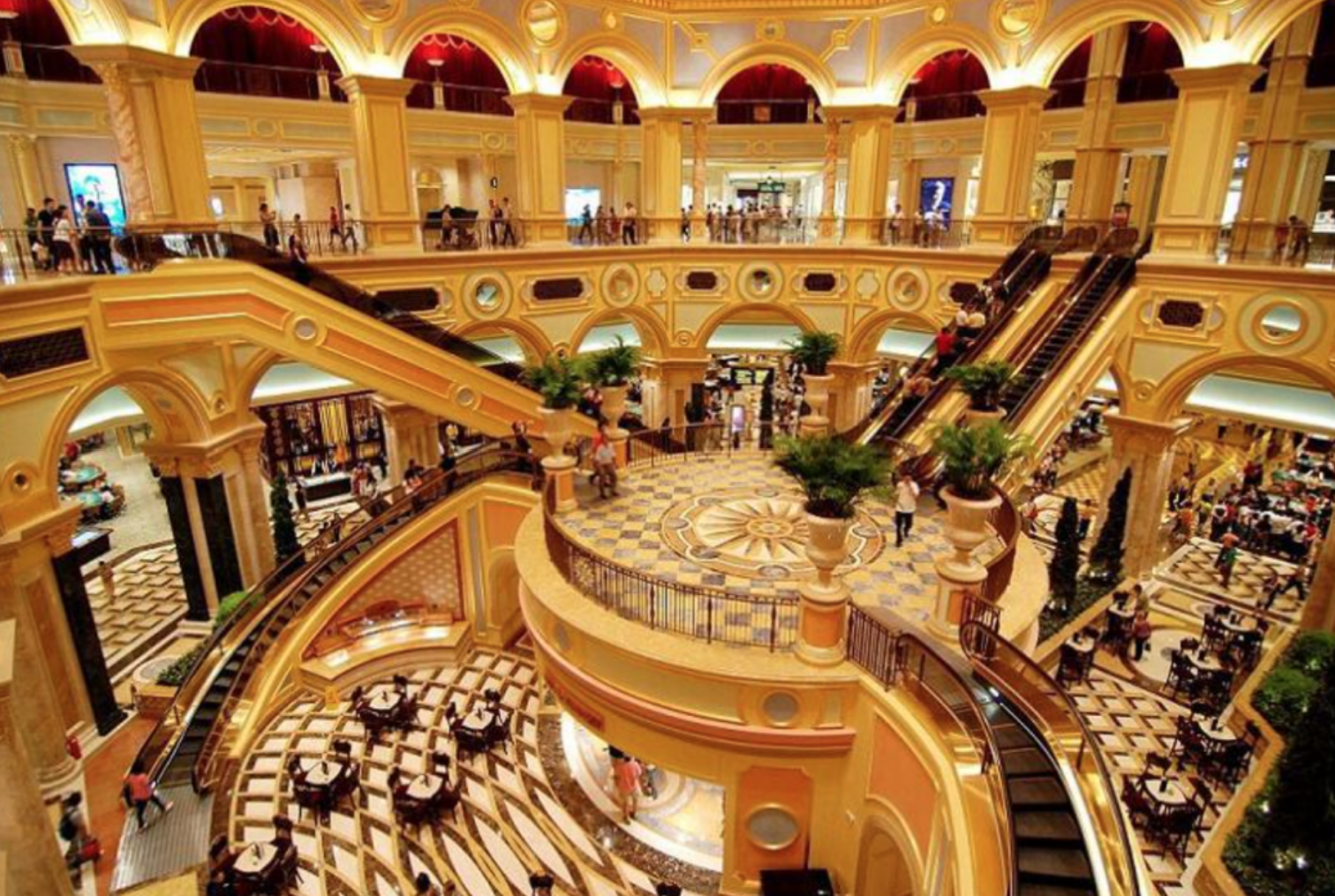In the dazzling world of casinos, where every detail is designed to enchant and entertain, the intersection of art and architecture takes center stage, elevating gambling halls beyond mere venues of chance to galleries of opulence and design. The most lavishly designed casinos merge fine art, groundbreaking architecture, and luxury to create environments that are not just about gambling but are experiences in their own right. From the Bellagio’s famed fountains to the intricate frescoes of The Venetian Macao, these establishments transform the act of placing a bet into a walk through an art exhibition.
The marriage of art and casino design is not just about aesthetics; it’s a calculated part of the casino’s strategy to create an atmosphere that speaks of luxury and exclusivity. This allure not only enhances the guest experience but also serves as a significant draw to attract tourists from around the globe. In this exploration, we delve into how art is integrated into the world’s most beautifully designed casinos, highlighting the role of art in creating the ambience that makes casinos renowned not just for their gaming but as icons of design innovation and luxury. For a deeper insight into this fascinating world, a visit to Richard casino login would reveal the extent to which these establishments go to ensure a top-tier experience, blending the thrill of gaming with the elegance of fine art.

The Role of Art in Modern Casinos
The integration of art in modern casinos goes beyond mere decoration; it is a strategic element that enhances the thematic allure and creates a multi-sensory experience for visitors. Art in casinos is not just about hanging paintings on walls or placing sculptures in lobbies; it involves a meticulous orchestration of every visual and spatial element to produce an environment that encapsulates luxury, fantasy, and escapism.
Sculptures and Installations
Modern casinos feature dynamic sculptures and installations that do more than fill space. These pieces are often custom-made by renowned artists and are meant to captivate and intrigue, contributing to the narrative that each casino builds around its brand. For example, the ARIA
Resort & Casino in Las Vegas houses a collection of prominent public art pieces including works by Maya Lin and Jenny Holzer, transforming ordinary gaming floors into extraordinary spaces that speak to a cultured audience.
Designer Interiors
The interior design of a casino plays a crucial role in articulating its theme and luxury status. Designer interiors in casinos are meticulously crafted to reflect the casino’s character, often involving collaborations with famous interior designers and architects. The opulent designs are
seen in elements such as custom-made carpets, elaborate chandeliers, and bespoke furniture, which together create a cohesive look that enhances both the beauty and functionality of the space. For instance, The Wynn Las Vegas employs elaborate floral displays and vibrant, mosaic floorings that echo the resort’s commitment to unsurpassed luxury.
The application of art and design in casinos serves multiple purposes; it not only beautifies the space but also works to make the environment more engaging and memorable for guests. This aesthetic commitment helps in distinguishing high-end casinos from their competitors, making them destinations for those who appreciate art and design as much as the thrill of gambling.
Iconic Casino Designs
Within the realm of lavish casinos, certain establishments stand out not only for their gaming prowess but also for their distinctive architectural and artistic flair. These iconic casinos are landmarks in their own right, celebrated for their elaborate decor and innovative design elements that set the standard for luxury and creativity in the industry.
The Bellagio, Las Vegas
One of the most emblematic examples of artistry in casino design is The Bellagio in Las Vegas. Known globally for its elegance and opulence, The Bellagio features an 8-acre lake between the building and the Strip, which houses the famous Fountains of Bellagio—a magnificent water
show choreographed to music and lights. Inside, the Bellagio’s conservatory and botanical gardens offer a seasonal display of plants, flowers, and trees creatively arranged to celebrate various themes and holidays, transforming the space into a living art exhibit.
The interior of The Bellagio is equally impressive, with Dale Chihuly’s Fiori di Como, a vibrant hand-blown glass flower installation, gracing the ceiling of the lobby. This striking piece comprises over 2,000 flowers and is one of the most photographed artworks in Las Vegas. The casino’s commitment to art extends to its Bellagio Gallery of Fine Art, which regularly hosts exhibitions featuring works from museums and private collections around the world, allowing guests to engage with art in a setting that transcends traditional museum experiences.
The Venetian Macao
Shifting the focus to Asia, The Venetian Macao stands as a monumental achievement in casino resort design. It replicates the lavishness and romance of its sister property in Las Vegas, yet magnifies the experience with its expansive scale. The Venetian Macao is the largest casino in
the world and the largest single structure hotel building in Asia.
Art and architecture at The Venetian Macao draw heavily from its Venetian namesake, featuring replicas of various Venetian landmarks, including the Palazzo Ducale, Piazza San Marco, and even gondola rides through its indoor canals. These elements are complemented by Rococo ceilings and Baroque sculptures that embellish the gaming areas, blending renaissance grandeur with the thrill of modern-day gambling.
These examples illustrate how the world’s most iconic casinos are not just gaming centers but are curated experiences where every hallway and corner offers visual delights that enhance the overall visitor experience.
The Impact of Artistic Design on Casino Success
The strategic use of artistic design in casinos does more than beautify the environment; it plays a pivotal role in the business success of these establishments. By integrating art and high-end design, casinos can enhance their appeal, increase foot traffic, and even boost their overall profitability. This section explores how artistic elements contribute to the allure and effectiveness of casinos as entertainment destinations.
Artistic design in casinos serves several strategic purposes. First, it creates a unique brand identity, distinguishing a casino from its competitors and making it memorable to visitors. Art and design invoke emotions and can create a sense of awe, which can be a significant draw for tourists seeking unique experiences. This emotional connection can encourage longer stays, increased spending, and repeat visits.
Moreover, art and luxury appeal to a specific demographic—affluent visitors who seek not just gambling opportunities but a comprehensive luxury experience that includes dining, shopping, and entertainment. For these visitors, a casino’s aesthetic and artistic offerings are as crucial as its gaming facilities. By catering to these preferences, casinos can tap into a lucrative market segment.
The effectiveness of art in casinos is also evident in its ability to enhance the overall customer experience. Art installations, designer interiors, and thematic architecture can transform a casino visit into an immersive journey. This not only enriches the visitor’s experience but also encourages positive word-of-mouth and social media sharing, which are powerful marketing tools in today’s digital age.
Furthermore, art can play a role in placemaking, creating a distinct sense of place that engages visitors. Casinos like The Bellagio and The Venetian Macao are examples of how art and architecture can anchor a casino’s identity, turning them into iconic symbols recognized worldwide. This not only boosts tourism but also cements the casino’s status as a cultural and entertainment landmark.
In conclusion, the integration of artistic design in casinos is a sophisticated strategy that enhances the aesthetic appeal and enriches the visitor experience, contributing significantly to the casino’s success. The investment in art and design pays dividends not just in financial terms but also in the creation of a distinctive, luxurious atmosphere that can become synonymous with the casino’s brand.
Conclusion
The confluence of art and luxury in the design of the world’s most lavishly decorated casinos not only underscores the significant role of aesthetics in casino architecture but also highlights the broader implications of art in commercial spaces. These casinos transcend the traditional boundaries of gaming venues, evolving into art-filled sanctuaries that offer a comprehensive experience of luxury, entertainment, and cultural enrichment.
As we have seen, art in casinos is not merely decorative. It is a strategic business tool that enhances the customer experience, strengthens brand identity, and distinguishes these establishments within the competitive hospitality industry. By integrating high-end art and architecture, casinos can attract a diverse audience, from seasoned gamblers to art aficionados and luxury seekers, ensuring a steady flow of visitors from around the globe.
Looking forward, the trend of incorporating art and sophisticated design into casino environments is likely to continue, driven by the ongoing competition to captivate and retain guests. The future might see even more innovative integrations of technology and art, such as digital installations and interactive art pieces that engage visitors in new and exciting ways. These developments will not only redefine the aesthetic standards of casino design but will also set new benchmarks for how art can be used to enhance commercial success and visitor satisfaction.
The journey through the world’s most beautifully designed casinos reveals a fascinating intersection of art, luxury, and business acumen. It is clear that when casinos invest in art, they are not merely buying decoration; they are crafting experiences that resonate with beauty, wonder, and exclusivity.
This exploration of the artistry in luxury casino design highlights the transformative power of art in shaping environments that are not just seen but are truly experienced. As we continue to witness the evolution of casino design, one thing remains certain: the marriage of art and
architecture will continue to play a pivotal role in defining the future of luxury entertainment spaces.





















